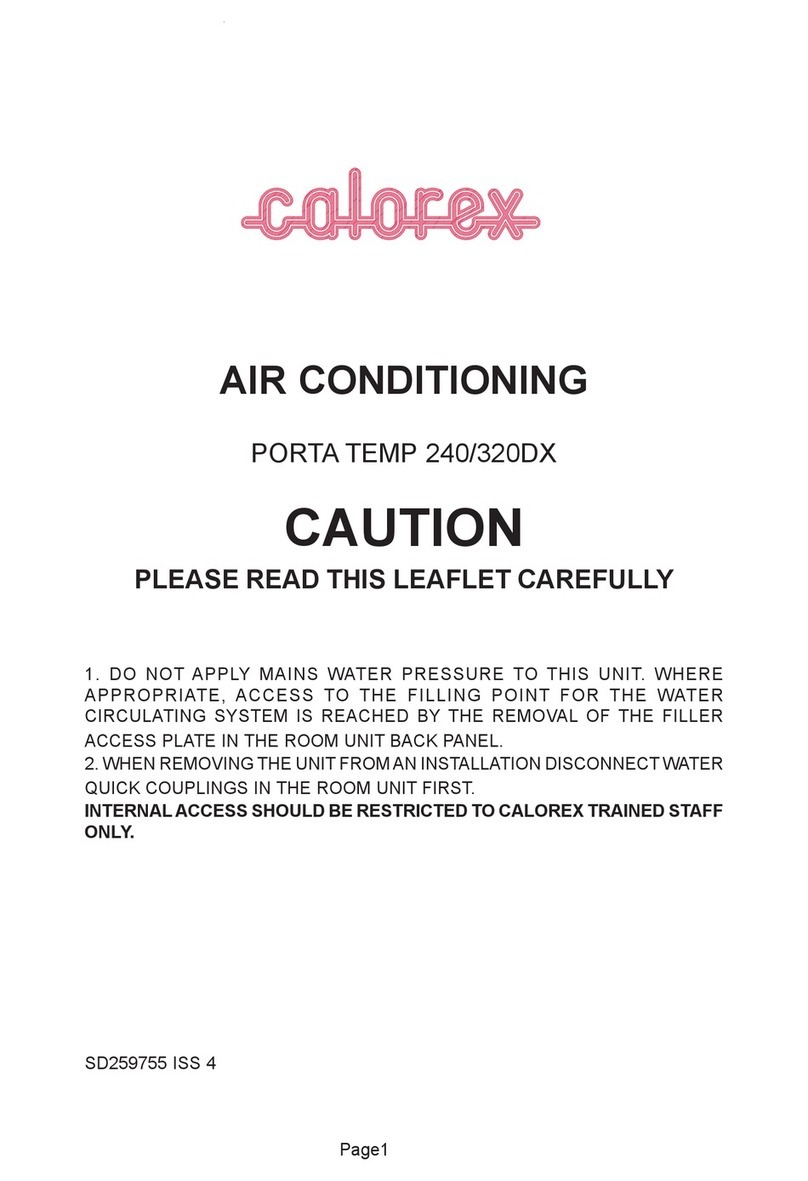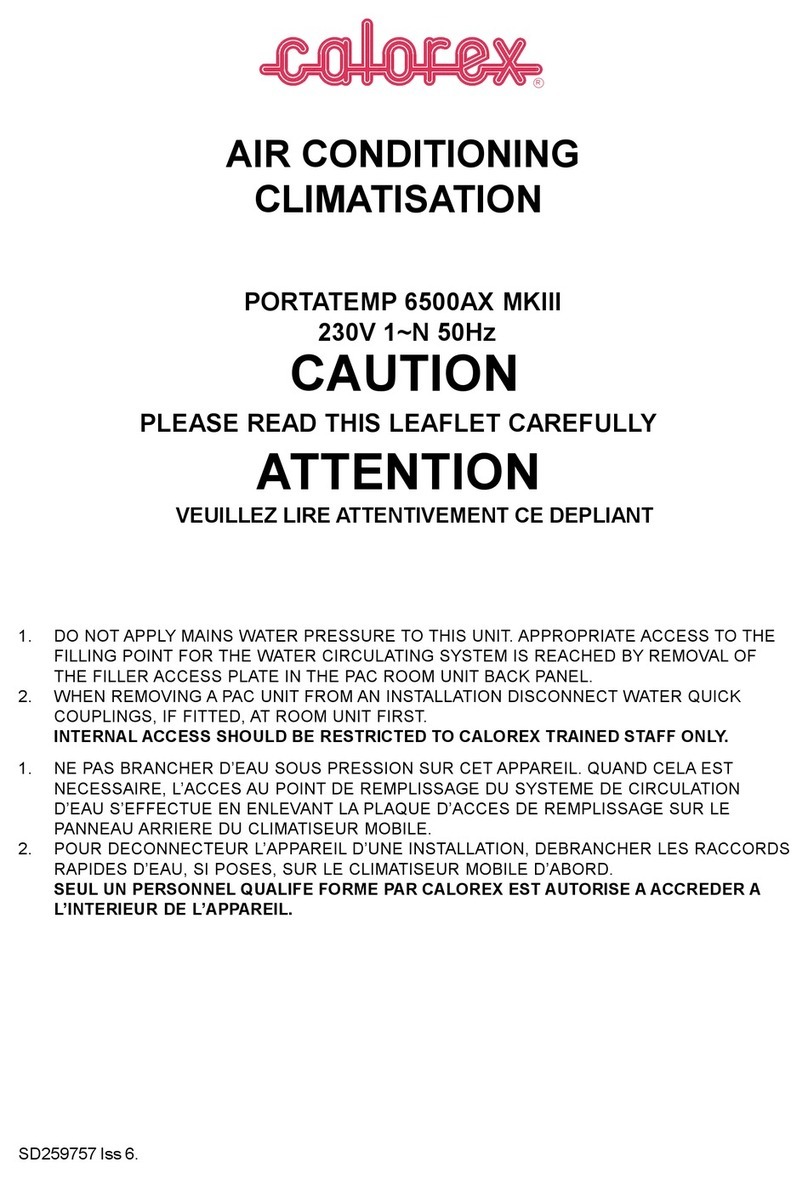2ACT-7 QUICK START GUIDE
QUICK START GUIDE
HEALTH AND SAFETY WARNING
As e air conditioner contains electrical and
rotational equipment, it is recommended at ONLY
competent persons carry out any work on is type
of device.
Isolate electrically before entering machine or
removing panels.
This appliance can be used by children from 8 years
and above and persons wi reduced physical,
sensory or mental capabilities or lack of experience
and knowledge if ey have been given supervision
or instruction concerning use of e appliance in
a safe way and understand e hazards involved.
Children should not play wi e appliance. Cleaning
and user maintenance shall not be made by children
wiout supervision.
General safety
• This device should only be operated by a competent
adult who has read and understood ese instructions.
• Never operate is device if you are ill, feeling tired or
under e influence of alcohol or drugs.
• Never put anying on top of e device or block e air
inlets or outlets.
• Make sure e device is switched off and unplugged
aer use.
• Check condition of e device before use. If device
is showing signs of damage contact your supplier
immediately.
Warnings
• This device MUST be transported and operated in e
upright position at all times.
• Do not operate is device if it has missing, damaged,
insecure guards or electrical components.
• Ensure e device is sited on firm level ground.
• Locate away from any possible unauorised
interference.
• Ensure electrical supplies are of adequate capacity.
• The user must not undertake any service or repair of
e device.
• Ensure debris cannot be sucked into e device.
If ere is any doubt concerning e device or installation
consult your supplier.
Heal and safety at work act 1974
Under section 6 of e above Act, it is e duty of e
manufacturers and suppliers of e products for use at
work to ensure, so far it is reasonably practicable, at such
products are safe wiout risk to heal when properly used
and to make available to users of such products adequate
information about eir safe and proper operation.
Air conditioners should only be used in e manner and
purpose for which ey were intended and in accordance
wi e recommendations detailed in is guide. Our air
conditioners have been designed, produced and inspected
wi safety in mind, but ere are certain basic precautions
which should be taken by e user and in particular attention
is drawn to e safety precaution in is leaflet.
It is imperative, erefore, at all persons who may make
use of e device have all e information and instructions
ey require to ensure at ey are fully aware of any
hazards, and at ey know bo e purpose and e
correct manner of e use of e device.





























